Exploring the Latest iPhone Models: Features and Insights
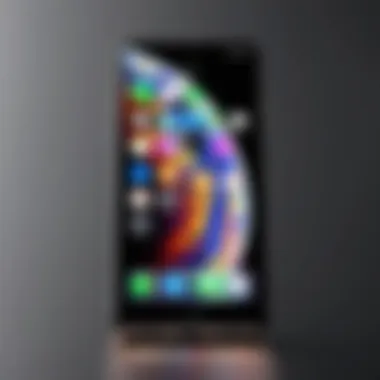
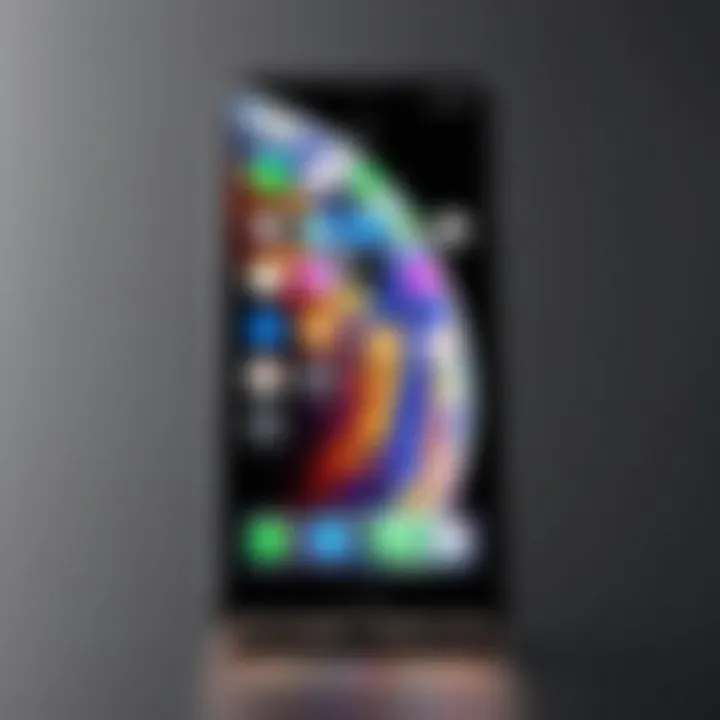
Intro
Apple's latest line of iPhones represents a pivotal moment in the evolution of smartphone technology. As the market becomes increasingly saturated with advanced devices, Apple strives to maintain its position as a leader in innovation. This new series delivers significant upgrades in various elements, catering to tech-savvy customers who seek both functionality and desirability in their devices.
In this article, we will examine the technical specifications that define these new iPhones, explore the captivating design elements, and analyze market sentiments regarding the launch. This will highlight the unique features and functionalities that set these models apart from their predecessors.
Overview of the Technology
Key specifications
The new line of iPhones is equipped with cutting-edge technology designed to enhance user experience. Key specifications include:
- Processor: These models utilize the A17 Bionic chip, which promises improved performance and efficiency compared to previous models.
- Display: The incorporation of Super Retina XDR displays with ProMotion technology achieves smoother visuals and an immersive viewing experience.
- Camera: Advanced camera systems, such as the new triple-lens setup, facilitate better low-light performance and innovative computational photography.
Unique selling points
The unique selling points of this new line extend beyond hardware improvements. They incorporate distinct features that enhance user interaction and satisfaction:
- 5G Connectivity: Enhanced download speeds and lower latency offer a more seamless connection for heavy data users.
- iOS Integration: The latest iOS features, including improved privacy settings and enhanced app capabilities, ensure that users can fully leverage the technology of their devices.
- Sustainability Initiatives: Apple continues to focus on environmentally friendly practices, including the use of recyclable materials in the manufacturing process.
"The new iPhones are not just about aesthetics; they are a blend of performance and sustainability, making them appealing to modern consumers."
Design and Build Quality
Material used
Apple has made notable advancements in design and build quality with this new series. The use of materials like aerospace-grade aluminum and ceramic shield glass enhances durability while providing a premium look and feel. This combination ensures that the devices are both stylish and resilient, offering protection from everyday wear and tear.
Ergonomics and usability
Design considerations have also focused on ergonomics and usability. The new models feature a sleeker profile, which allows for comfortable one-handed use. Additionally, thoughtful placement of buttons and sensors improves overall accessibility for users, ensuring that interaction with the device is intuitive and efficient.
Apple's attention to detail in both technology and design solidifies its commitment to delivering high-quality products that meet the evolving needs of its customers. As we continue to explore consumer reactions and market positioning, the full impact of this new line on the smartphone landscape will become clearer.
Prologue to the New Line of iPhones
The recent release of the new line of iPhones marks a significant moment in the tech industry. With smartphone technology evolving rapidly, Apple consistently aims to stay ahead of its competitors through innovation and user experience enhancement. This article examines the new iPhones to highlight their features, specifications, and market implications.
One key element to consider is the integration of advanced technology into everyday life. Each new iPhone model aims to deliver higher performance and better functionality, attracting not only loyal Apple users but also those in quest for premium smartphones. Potential buyers are often curious about what sets this line apart from older versions and rival brands.
In addition, consumer expectations play a vital role in how Apple designs their products. The company seems to prioritize aspects such as camera quality, processing speed, and battery life. Such considerations are essential as they directly impact user experience and satisfaction.
"Understanding the new line of iPhones is essential for consumers and tech enthusiasts, as it reveals trends in technology and design."
When examining the new iPhones, it is crucial to discuss the real-world applications of their features. For instance, improvements in the camera can change how users capture and share their experiences. Optimized battery life enables prolonged usage without the need for frequent charging. These factors contribute to the increasing prevalence of smartphones in various aspects of life, from personal to professional settings.
Moreover, this section's relevance extends beyond just specifications. It encompasses the essence of what these devices represent in a digital society that is progressively leaning towards technology-driven solutions. By focusing on the new line of iPhones, we aim to provide a nuanced understanding of how these devices fit into the broader landscape of technological advancement and consumer behavior.
Historical Context of iPhone Releases
The significance of the historical context in relation to iPhone releases cannot be overstated. Understanding how previous models have shaped consumer expectations, technological advancements, and Apple's strategic direction offers crucial insights into the latest line of iPhones. With each iteration, Apple has not only introduced new features but also set industry standards that influence the smartphone market as a whole.
Evolution of the iPhone
Since its inception in 2007, the iPhone has undergone substantial transformations. Early models focused primarily on touch interface and simple apps. Over time, iterative improvements brought advanced processing power, enhanced graphics, and more sophisticated camera systems. The introduction of features like Face ID, wireless charging, and augmented reality capabilities marked a turning point in smartphone technology.
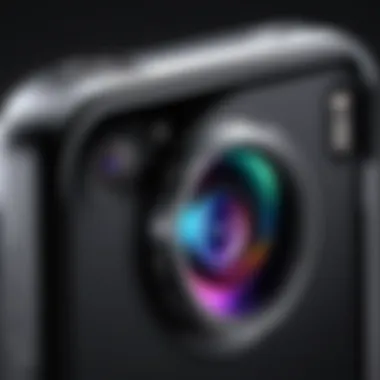
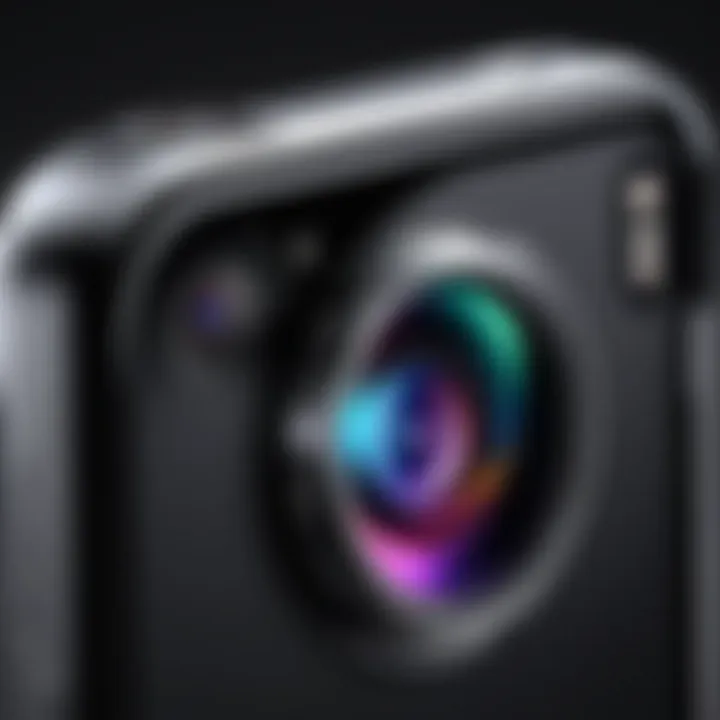
- 2007: Original iPhone
- 2010: iPhone 4 introduced Retina display
- 2014: iPhone 6 and 6 Plus with larger screens
- 2017: iPhone X debuted with Face ID
- 2020: iPhone 12 series and introduction of 5G technology
Each new model builds on the technological foundations laid by its predecessors, showcasing Apple's commitment to innovation.
Previous Series Comparison
Comparing the latest line of iPhones with previous series highlights not only incremental improvements but also broader trends in design, functionality, and user experience.
- Camera Capabilities: The latest models feature improved sensors and software algorithms to enhance photography, continuing a long-standing focus on imaging quality that began with the iPhone 4.
- Performance: Advancements in chip technology demonstrate a clear trajectory towards faster processing speeds. For instance, the A14 Bionic chip introduced in the iPhone 12 series significantly outperformed the A13 in the previous generation.
- Design Language: Apple has consistently refined its aesthetic appeal. Starting from the aluminum casing in the iPhone 6 series to the glass and ceramic shield introduced in later models, visual and tactile quality has been prioritized.
"The evolution of the iPhone is not merely about new features but also about shaping consumer perceptions and expectations in a tech landscape that demands constant innovation."
In summary, the historical context of iPhone releases reveals a complex narrative of technological advancement and market positioning that continues to influence the smartphone industry. Understanding this context sets the stage for appreciating the distinguishing features of the new line of iPhones.
Technical Specifications and Features
The technical specifications and features of the new line of iPhones play a crucial role in understanding their potential performance and usability significance. These elements are designed to cater to the needs of tech-savvy individuals and provide insights into how these devices stand against competitors. Investigating the specifications helps users appreciate advancements in processing power, camera technology, and battery efficiency. Each feature adds value, making the overall experience more satisfying and efficient for users.
Processor and Performance
The heart of any smartphone is its processor. The new iPhones come equipped with the A17 Bionic chip, which stands out for its efficiency and speed. This processor enhances not only the general performance of the device but also its capability to run demanding applications seamlessly.
- Performance Gains: Users can expect faster speeds in day-to-day tasks and enhanced gaming experiences. The A17 chip significantly reduces latency, ensuring smooth operation during multitasking.
- Energy Efficiency: The chip is engineered to consume less power while enhancing performance, leading to better overall battery life.
- Future-Proofing: As applications become more resource-intensive, such advanced processing power assures users that their devices will remain capable for years to come.
Camera Innovations
Camera technology is a pivotal point of interest. The latest iPhones feature an upgraded camera system, showcasing significant improvements over prior models.
- Higher Megapixel Count: With enhanced sensors, users benefit from superior image resolution, especially in low-light environments. This is important for photographers and social media users alike.
- Advanced Computational Photography: New algorithms help to improve image quality with capabilities like Night Mode and Smart HDR. These features allow for creative flexibility and high-quality images under various conditions.
- Video Capabilities: The integration of improved stabilization and 4K recording at higher frame rates makes the new models appealing for content creators seeking professional output.
Battery Life and Charging
Battery life and charging technology are critical factors in users' satisfaction. The new iPhones have made notable advancements in this area.
- Extended Battery Life: Users often prioritize battery longevity. The new units come equipped with larger batteries and software optimizations that ensure extended use without frequent recharging.
- Fast Charging Capabilities: The addition of faster charging options ensures that users can quickly power their devices when needed, a convenience that fits our fast-paced lifestyles.
- Wireless and MagSafe Charging: The inclusion of MagSafe technology allows for faster and more reliable wireless charging, providing users with enhanced options for their charging habits.
In summary, the technical specifications of the new line of iPhones illustrate a commitment to performance, innovation, and user satisfaction. Understanding these features enables potential buyers to make informed decisions about their next smartphone.
Design and Display
The design and display of the new line of iPhones are critical elements that significantly shape user experience and brand perception. These aspects not only reflect the aesthetics of the device but also influence usability and functionality. In a market saturated with various smartphone choices, the appeal of design can guide consumer decisions. Furthermore, advancements in display technology continue to elevate the interaction between the device and the user, making this area essential to explore.
Exterior Design Changes
With the latest line of iPhones, exterior design changes are more than just cosmetic adjustments. Apple has once again redefined its approach to device aesthetics. The new models embrace a sleeker and more minimalist look, showcasing refined edges and utilizing premium materials. This focus on craftsmanship is evident in the quality of the finishes, enhancing the overall premium feel.
A few standout design changes include:
- Material Use: The most recent iPhones utilize Ceramic Shield front covers, ensuring better drop protection and durability compared to previous models.
- Color Options: New colors are introduced, catering to consumer preferences for personalization. This includes deeper hues and unique finishes that capture contemporary trends.
- Size and Weight: While retaining a compact form factor, the slight reductions in weight enhance portability, making them easier to handle and use.
These design evolutions aren’t merely aesthetic. They enhance grip, reduce smudges, and facilitate smoother interactions. The overall improvement in ergonomics makes the device suitable for prolonged usage.
Display Technology Advancements
Display technology plays a pivotal role in how users interact with their devices. The new line of iPhones showcases significant advancements in display capabilities. The introduction of Super Retina XDR technology allows for unparalleled visual clarity. This development provides users with a vibrant color palette and impressive contrast ratios, making everything from gaming to streaming an immersive experience.
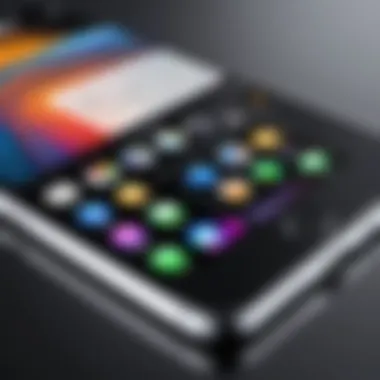
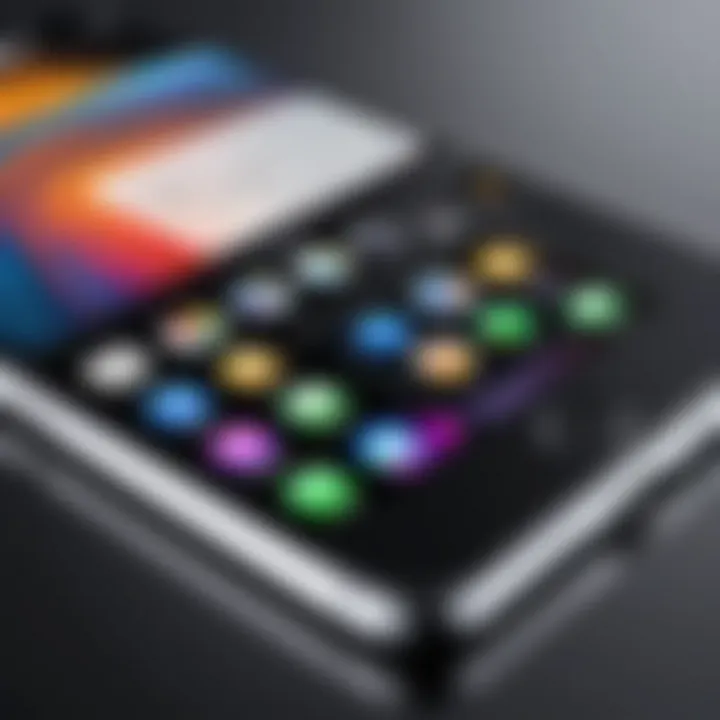
Key advancements include:
- Higher Resolution: The displays now feature a resolution that significantly boosts pixel density. This results in sharper images and text, enriching the viewing experience.
- Enhanced Brightness: With peak brightness improvements, the screens remain clear even in direct sunlight, addressing a common user concern.
- ProMotion Technology: Models equipped with ProMotion technology offer a 120Hz refresh rate. This advancement allows for smoother scrolling and more responsive touch interactions, which are especially beneficial for gamers and high-performance applications.
This leap in display technology not only enhances everyday use but also sets a new benchmark for competitor devices.
In summary, the integrations of robust design and dynamic display enhancements in the latest iPhones are aimed at refining user experience. These elements work in tandem to position Apple favorably in an ever-evolving smartphone market. Such innovations appeal to tech-savvy individuals looking for style without sacrificing performance.
Software Features
The software features of the new line of iPhones play a crucial role in defining their overall user experience. These features not only enhance the functionality of the devices but also ensure that they remain competitive in a rapidly evolving technological landscape. The integration of intuitive software capabilities can significantly differentiate the latest iPhones from previous models. This ensures that users benefit from an optimized experience tailored to contemporary needs.
iOS Updates and Features
The new line of iPhones operates on the latest iteration of iOS, brimming with updates that promise enhanced performance and user satisfaction. iOS introduces several features designed to make day-to-day tasks easier, from improved multitasking capabilities to refined user interfaces. For instance, the introduction of widgets and app organization through Smart Stacks greatly enhances customization.
Moreover, system-wide updates improve stability and speed. The new line now also supports advanced features like Focus Mode, which aids users in managing notifications and minimizing distractions. This feature resonates particularly with individuals seeking to balance their personal and professional lives effectively. Furthermore, improvements in Siri’s functionality permit more natural interactions, making the experience seamless.
Privacy and Security Enhancements
In today’s digital age, privacy and security have become paramount. The new line of iPhones includes substantial enhancements that prioritize user security and data privacy. Continuous advancements in encryption safeguard personal information, ensuring that data breaches are less likely. Users can now benefit from features such as Mail Privacy Protection and App Tracking Transparency, which grant them greater control over their data.
Apple has established itself as a leader in privacy, consistently enhancing security measures across its devices. With the new iPhones, users can feel confident that their online activities are shielded from unwanted scrutiny.
"In an era where data has become a new currency, security features integrated into iPhones provide much-needed assurance to tech-savvy consumers."
Additionally, biometric authentication through Face ID or Touch ID provides a quick yet secure method for unlocking devices and authorizing transactions. These enhancements foster trust, making the latest iPhones appealing not only for their technological prowess but also for their commitment to user privacy.
Pricing and Market Positioning
Understanding the pricing and market positioning of the new line of iPhones is critical for both consumers and industry analysts. This section explores several key elements that make the pricing strategy significant. Pricing strategy not only determines the accessibility of these devices but also influences brand perception, competition, and ultimately, sales volume. The costs associated with new technology often indicate its value, and Apple employs a selective pricing model, which sends a clear signal about quality. Moreover, understanding market positioning provides insights into how Apple sees its products relative to competitors.
As Apple continues to innovate, the price point of new releases often reflects these enhancements. With advancements in technology, a company must consider both prices and potential consumer willingness to pay. This results in the careful calibration of features offered at specific price levels, ensuring that consumers perceive value in their purchase. Additionally, it is essential to consider the implications of pricing on long-term customer loyalty and brand advocacy.
Price Comparison with Competitors
When examining the latest iPhone models, a comparative analysis with competitor products becomes essential. The new iPhone series enters a crowded market filled with various options. For instance, models from Samsung, Google, and OnePlus often serve as direct competitors. While prices can vary greatly, the iPhones tend to fall into the premium category, justified by their refined ecosystem and hardware capabilities.
- iPhone 14: Starting price is around $799.
- Samsung Galaxy S23: Priced similarly, often around $799 - $859 depending on configurations.
- Google Pixel 7: Generally available starting from $599, offering a lower entry price point but lacking some premium features.
In comparing these devices, the emphasis falls not just on price but also on specifications such as camera quality, processing power, and user experience. Apple’s tight integration of hardware and software enhances the perceived value, making it appealing despite higher costs.
Consumer Spending Trends
Consumer spending trends provide further insight into how the new iPhones are positioned in the market. Recent research indicates that many consumers prioritize performance and reliability over price. In fact, many consumers are now willing to pay more for brands they trust. This inclination allows Apple to maintain its status within the premium smartphone market.
Several factors shape current spending trends:
- Economic Circumstances: Inflation and economic uncertainty can impact how much consumers are willing to spend on smartphones.
- Desire for Innovation: Consumers are keen to adopt devices with cutting-edge features, suggesting that they may invest more to stay current.
- Brand Loyalty: Apple enjoys a loyal customer base that often upgrades to the latest model, contributing to consistent sales even during economic shifts.
In summary, evaluating the pricing strategy and market positioning of the new iPhones reveals not only the direct costs involved but also the broader implications for consumer behavior and industry trends.
"The pricing model of Apple not only influences immediate sales but also shapes long-term consumer perceptions, brand loyalty, and market competition."
Understanding these dynamics helps in extrapolating future trends and preparing for shifts in the smartphone market.


Consumer Reactions and Reviews
Examining consumer reactions and reviews is crucial in understanding how the new line of iPhones resonates with its audience. These insights provide a realistic gauge of the product's reception in the rapidly evolving smartphone market. Evaluating feedback from early adopters, critics, and tech enthusiasts allows consumers and industry analysts alike to assess the new models' viability. Feedback can unveil both strengths and weaknesses, giving a balanced view of the user experience.
Early Adopter Feedback
Early adopters often play a key role in shaping a product's reputation. These are typically tech enthusiasts who purchase new devices as soon as they are available. Their reactions can provide valuable perspectives on performance, usability, and unique features. In the case of the latest iPhones, early user feedback has been overwhelmingly positive, especially in relation to camera capabilities and processing speed. Many users have praised the Photonic Engine, which significantly enhances low-light photography. This technology, combined with improved computational photography algorithms, has set a new standard for smartphone cameras.
However, there are concerns as well. Some early adopters have reported battery life issues, particularly during intensive usage. These observations often lead to discussions in forums like Reddit, where technology lovers dissect their experiences and share solutions.
Critiques and Praise
While positive feedback highlights the excitement surrounding the new iPhones, critiques provide necessary balance. One notable aspect of consumer feedback is the divide regarding pricing. Although this line of iPhones presents advanced technology, some consumers argue that the price point is too high compared to alternative options on the market.
Because of these views, it is important to analyze specific critiques.
- Camera Performance: Many praise the enhancements in photography. However, others feel the differences between the new models and previous series are marginal.
- Design Choices: The updated aesthetic has been generally well-received. Yet, some users find the feel less premium due to the materials used in the build.
- Software Features: Users appreciate the new iOS updates but express frustration over occasional bugs.
To encapsulate, analyzing critiques alongside praise provides a more comprehensive view of these devices. As potential buyers digest these reviews, their decision-making process becomes informed, enabling them to weigh benefits against drawbacks.
"Early adopters’ voices are crucial as they often set the tone for mainstream acceptance. Their opinions can sway less enthusiastic consumers considering a purchase."
By taking into account the wide array of consumer feedback, tech enthusiasts can make educated decisions and manufacturers can refine future iterations to better meet user expectations.
Potential Impact on the Smartphone Market
The introduction of the new line of iPhones is not just another product launch; it acts as a potential catalyst that could reshape the smartphone landscape. The market has always had a dynamic nature, where innovation leads to adjustments in consumer preferences and competitive strategies. The latest iPhone models underscore several key elements that could drive significant changes in the industry.
Market Disruption Analysis
The new line is poised to disrupt established norms in customer expectations and manufacturer standards. With advancements in technology, there is a possibility that competitors may feel pressured to elevate their own offerings.
- Enhanced camera capabilities on the new iPhones may challenge brands like Samsung and Google to enhance their imaging technology.
- The integration of advanced processors will likely set a new benchmark for performance measurements.
- Battery efficiency improvements can shift consumer attention toward longevity rather than just performance.
Moreover, Apple’s unique marketing approach can influence market dynamics. Their strategies frequently create a cascade of consumer interest, driving other manufacturers to quickly respond, sometimes resulting in rushed product improvements, which might not always meet consumer expectations.
Future Trends in Smartphone Technology
As this new series of iPhones enters the market, it also paves the path for future developments across the smartphone industry. Unique features implemented in these devices could lead to:
- Emphasis on sustainability, influencing other brands to adopt eco-friendly manufacturing processes.
- Integration of AI and machine learning technologies could advance the way smartphones interact with users, enhancing customization and user experience.
- Features that promote health and wellness may become mainstream, as Apple has begun to increase focus on health metrics within their ecosystem.
The intersection of these elements suggests that a paradigm shift is anticipated, with consumer behavior reflecting an adaptation to these new norms. By understanding how these iPhones impact the market, industry observers can better predict technological trends.
"Innovation is the catalyst that propels not just a brand, but an entire industry forward."
As Apple continues to lead in various aspects, competitors remain alert for opportunities to innovate and differentiate, resulting in an ever-evolving smartphone market.
Ending
The conclusion of this article serves as a reflective pause, synthesizing the intricate details discussed throughout the sections. It underscores the importance of understanding the new line of iPhones within the larger context of smartphone evolution and consumer expectations. The latest iPhones represent a significant leap in technology, combining cutting-edge features with refined aesthetics. This awareness allows consumers to make informed decisions based on their needs and preferences.
Summary of Key Insights
In summarizing the key insights, it is clear that the new line of iPhones introduces several groundbreaking features that distinguish them from previous models. Key points include:
- Advanced Camera Technology: Innovations in camera systems enhance photography, catering to both casual users and professionals.
- Processor Efficiency: The latest chips promise significant performance and efficiency improvements, allowing users to get more from their devices.
- Seamless Integration of iOS: Upgrades in software ensure that users experience a cohesive interaction with the hardware.
Additionally, the positioning of these devices in the market is quite strategic, as they not only compete with other flagship smartphones but also set a benchmark in quality and performance. Reviewing consumer feedback indicates a mix of excitement and cautious skepticism, reflecting the complex relationship users have with technology.
Looking Ahead: What’s Next for iPhones?
Looking toward the future for iPhones involves considering both technological advancements and user demands. Potential trajectories include:
- Enhanced AI Capabilities: Future models are likely to integrate artificial intelligence deeper into user experiences, improving everything from camera functionality to personal assistance.
- Sustainability Practices: As environmental concerns rise, Apple's focus on sustainability might influence design and manufacturing processes, further appealing to eco-conscious consumers.
- Expanded Connectivity Features: With the rise of smart home devices and the IoT landscape, future iPhones could offer more robust connectivity options to create seamless user experiences across multiple devices.







